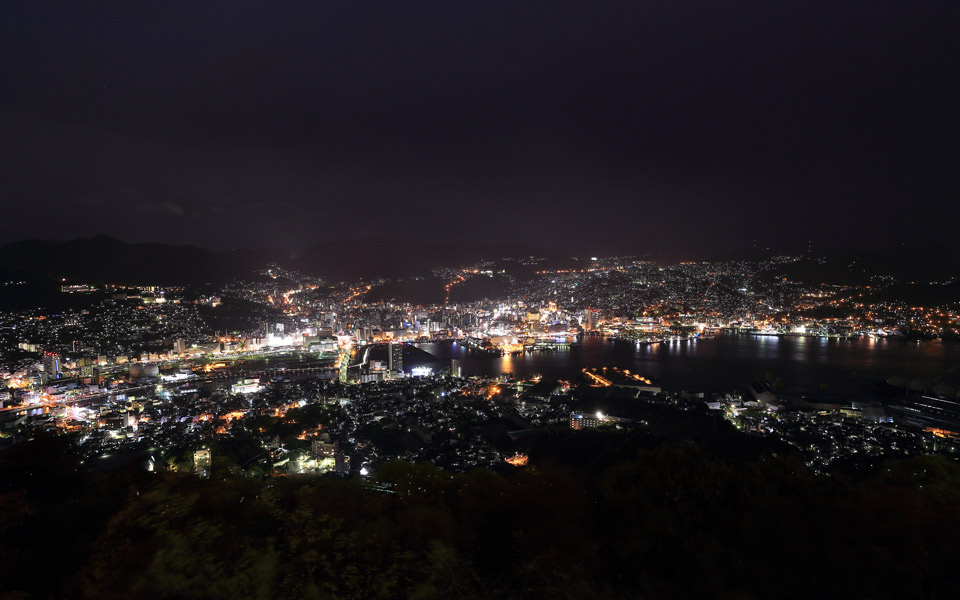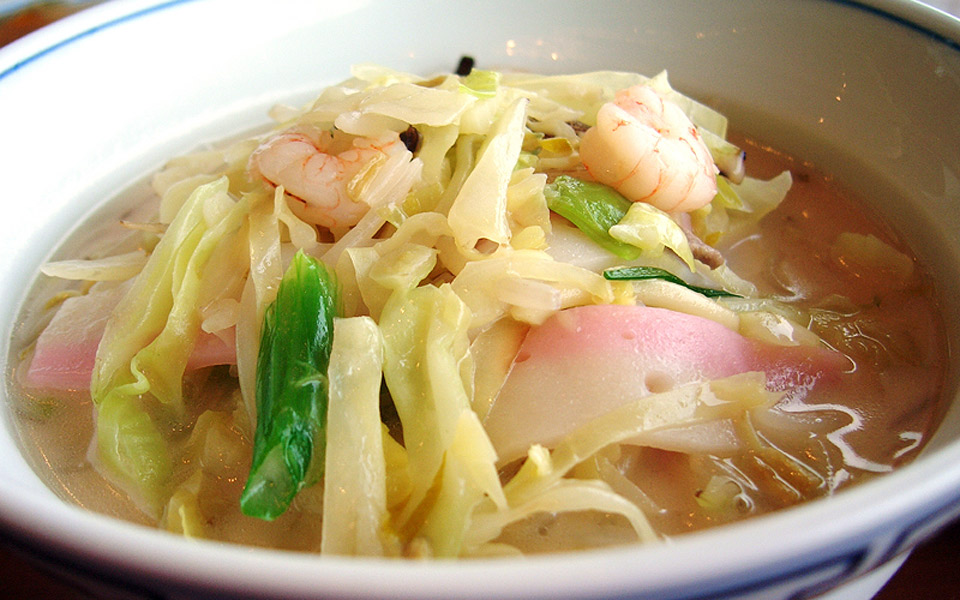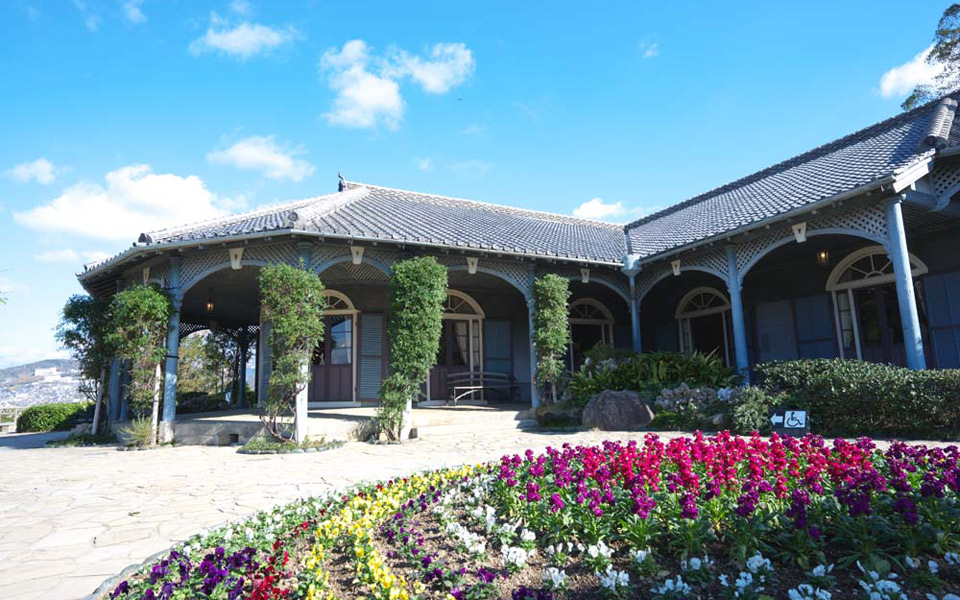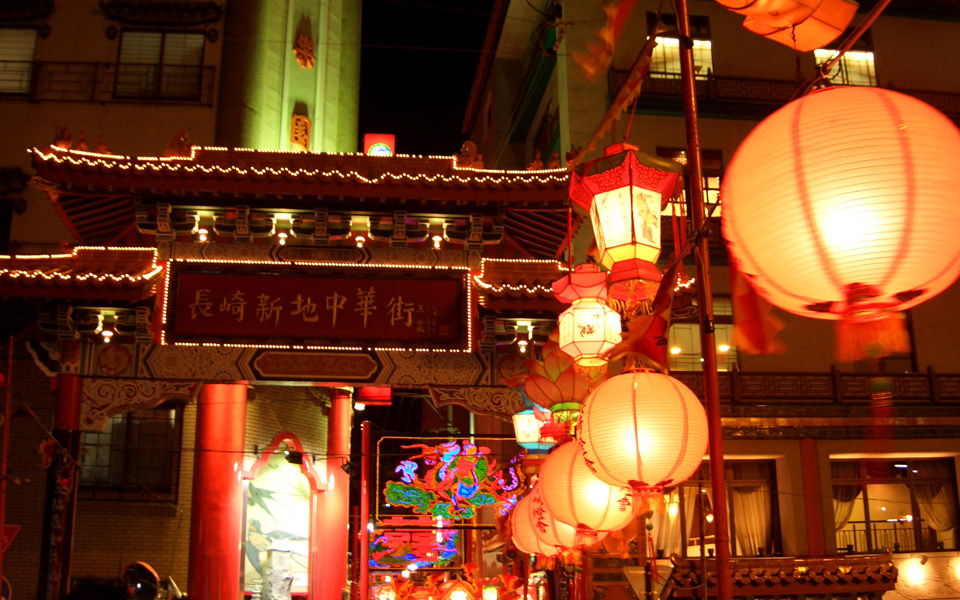
Nagasaki. It's nearly impossible to separate it from its recent tragic past, but Nagasaki is a city with a rich history and culture as well as its present-day dynamism. Visitors should not be misled into believing this to be sad place. The memory of the atomic bombing is respected and remembered, but Nagasaki is a city which dates back through the centuries as one of Japan's most dynamic and internationalized. Fascinating cultural, culinary and historical attractions await any visitor to this vibrant port city.
Nagasaki can trace its origins to the late 7th Century and was always Japan's first window on the world. Early contact and trade with merchants from China, Korea and Southeast Asia and then 16th Century business with Portuguese and Dutch merchants left a lasting impression on Nagasaki and its citizens, which later spread to the whole of Japan.
As a seaside port, spring, autumn and winters are milder than cities further north while summers tend to be hot but more comfortable than other areas with refreshing ocean breezes to help combat any humidity. Though spread out over a fairly large area, Nagasaki has extensive streetcar services which only add to the unique atmosphere of the city. These trams are augmented by bus and rail systems that make the city very easy to navigate. The city is also served by the Kyushu Shinkansen.
- Food
-
As an energetic port city with a long history of international trade, Nagasaki can lay claim to many unique culinary offerings famed throughout the country:
- Champon is a noodle dish of Chinese origin that is made by frying pork, seafood and vegetables and adding to a chicken & pork broth.
- Sara Udon is another noodle dish with a distinct flavor. Thin crispy noodles or thick soft noodles are topped with vegetables and a variety of seafood such as squid and prawns.
- Shippoku Ryori is a blend of Japanese, Chinese and Western culinary and cooking traditions. Using a Chinese style circular presentation, tables are heaped with Japanese, Chinese and Western influenced dishes.
- Castella is a signature cake from Nagasaki. Derived from recipes originally brought with Portuguese traders in the 16th Century, Nagasaki Castella is one of the most popular sweets now enjoyed throughout Japan.

- Attractions and Local Specialties
-
Nagasaki enjoys a spectacular natural setting and intruiging, complicated, occasionally tragic, history. Travelers will find a wide variety of historical and natural points of interest throughout the city and its environs...
- The Dutch Slope. Enjoy a walk through leafy, hilly avenues of this historic residential area leading up to the Glover Gardens.
- Glover Gardens and Residenc. An open air museum featuring 19th century merchant houses, strolling gardens and excellent views of the city from the hilltop.
- Shinchi Chinatown. One of the oldest Chinatowns in Japan, Shinchi Chinatown leaves its mark on Nagasaki through its festivals, music and, most notably, champon and soba udon restaurants!
- Dejima Island. Originally an artificial island built to house Dutch traders, the only Westerners allowed in Japan during the Edo Era (17th-19th Century), is today the focus of a major restoration project as well as offering visitors the chance to explore Nagasaki's past and present.
- Nagaskai Peace Park. Monuments, memorials and museums reminding us of the history of the atomic bombing of Nagasaki.

- Events & Activities
-
The vibrant, international character of Nagasaki is best demonstrated in it's numerous festivals held throughout the year:
- Autmun's Nagasaki Kunchi Festival spotlights this blend in dramatic fashion. Traditional Japanese and Chinese musicians set the rhythm of the festivities while Chinese dragon dances share the streets with mikoshi portable shrines and floats showcase Nagasaki past and present.
- February sees Nagasaki's historical connection to China highlighted during the Nagasaki Lantern Festival, with over 10,000 lanterns adorning Chinatown during the celebrations.
- The Nagasaki Hata-age Kite Festival helps usher in Spring in early April. Dating back centuries, kite flying and battles create an amazing spectacle in the skies over parts of the city.



